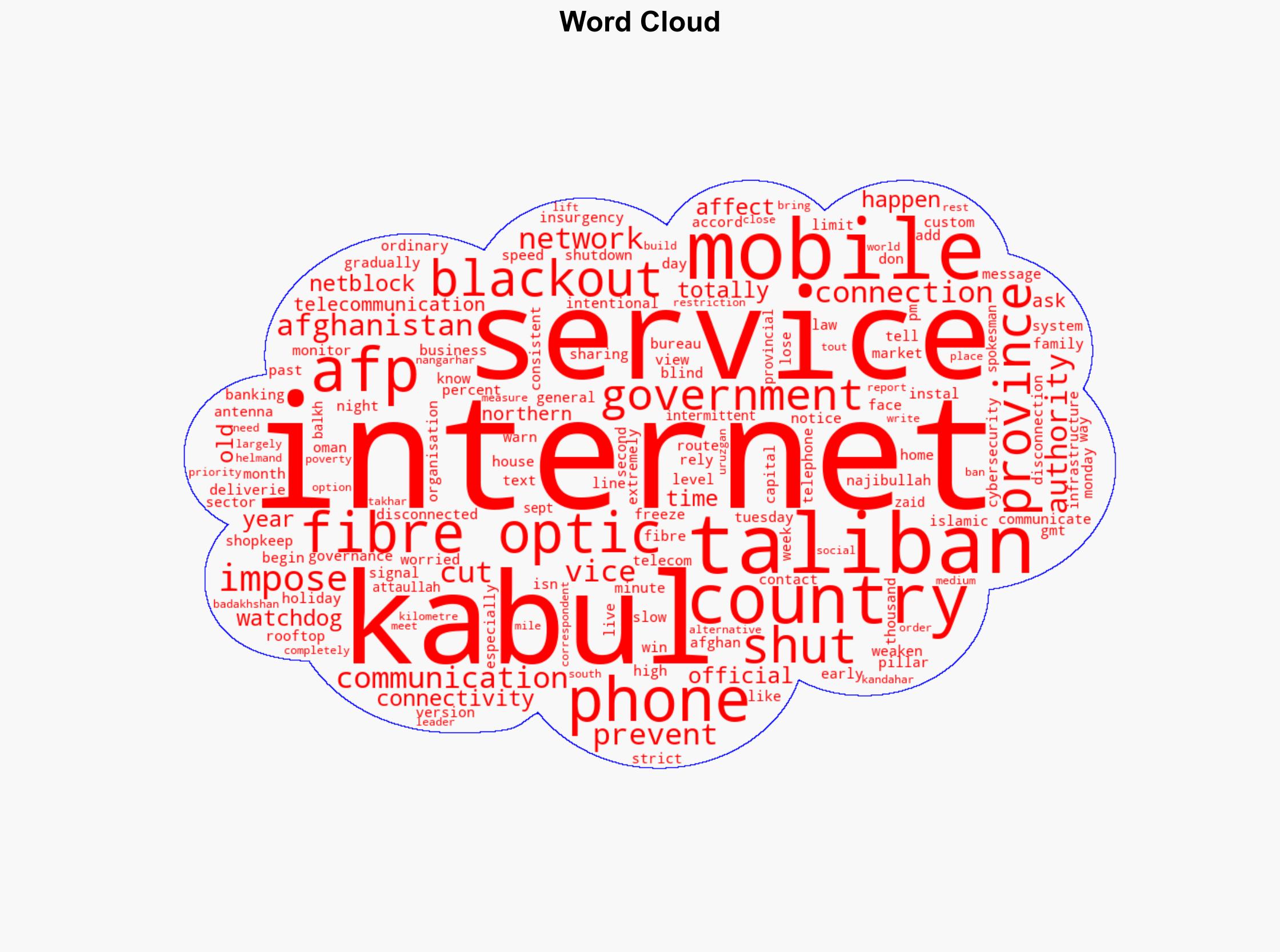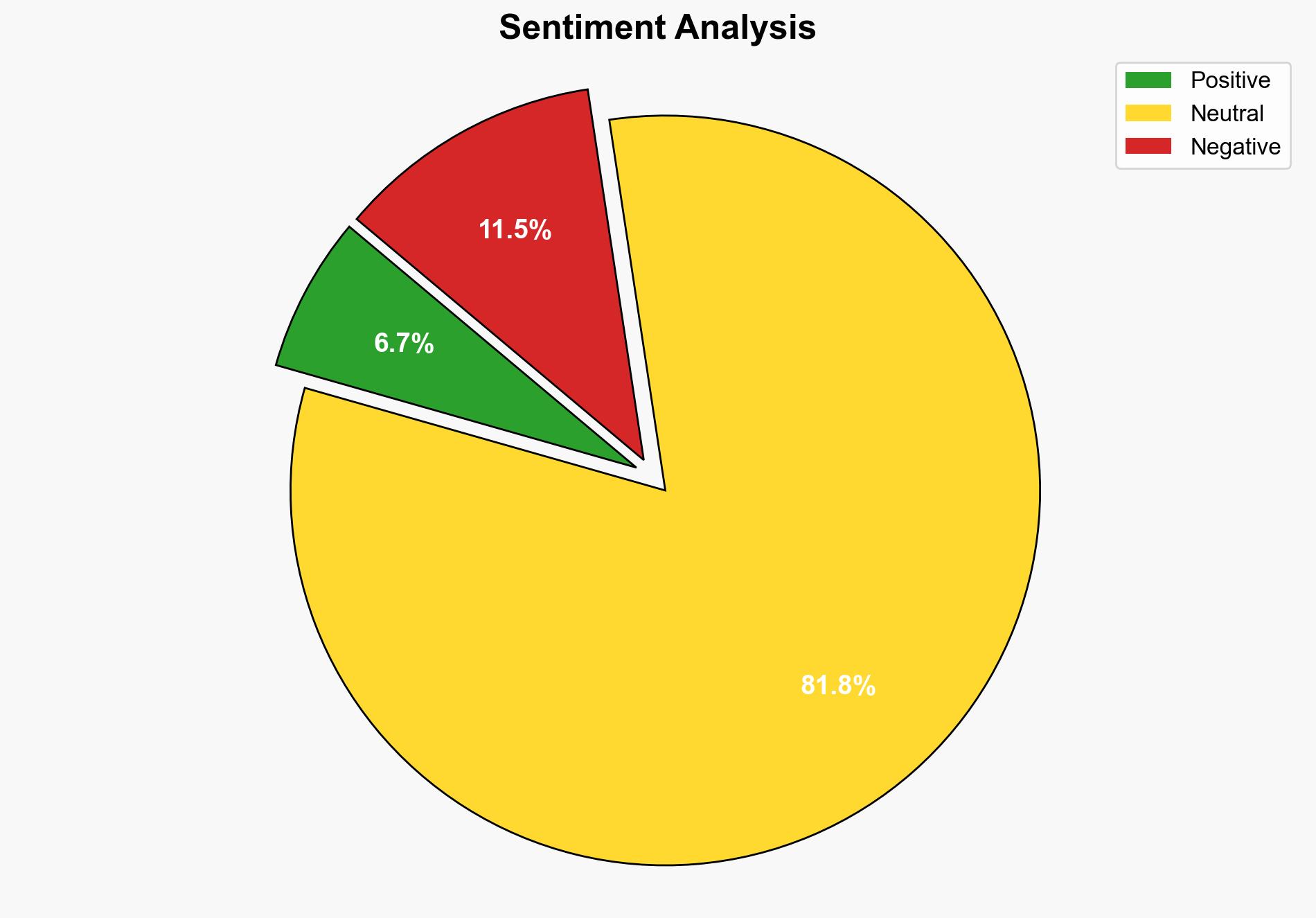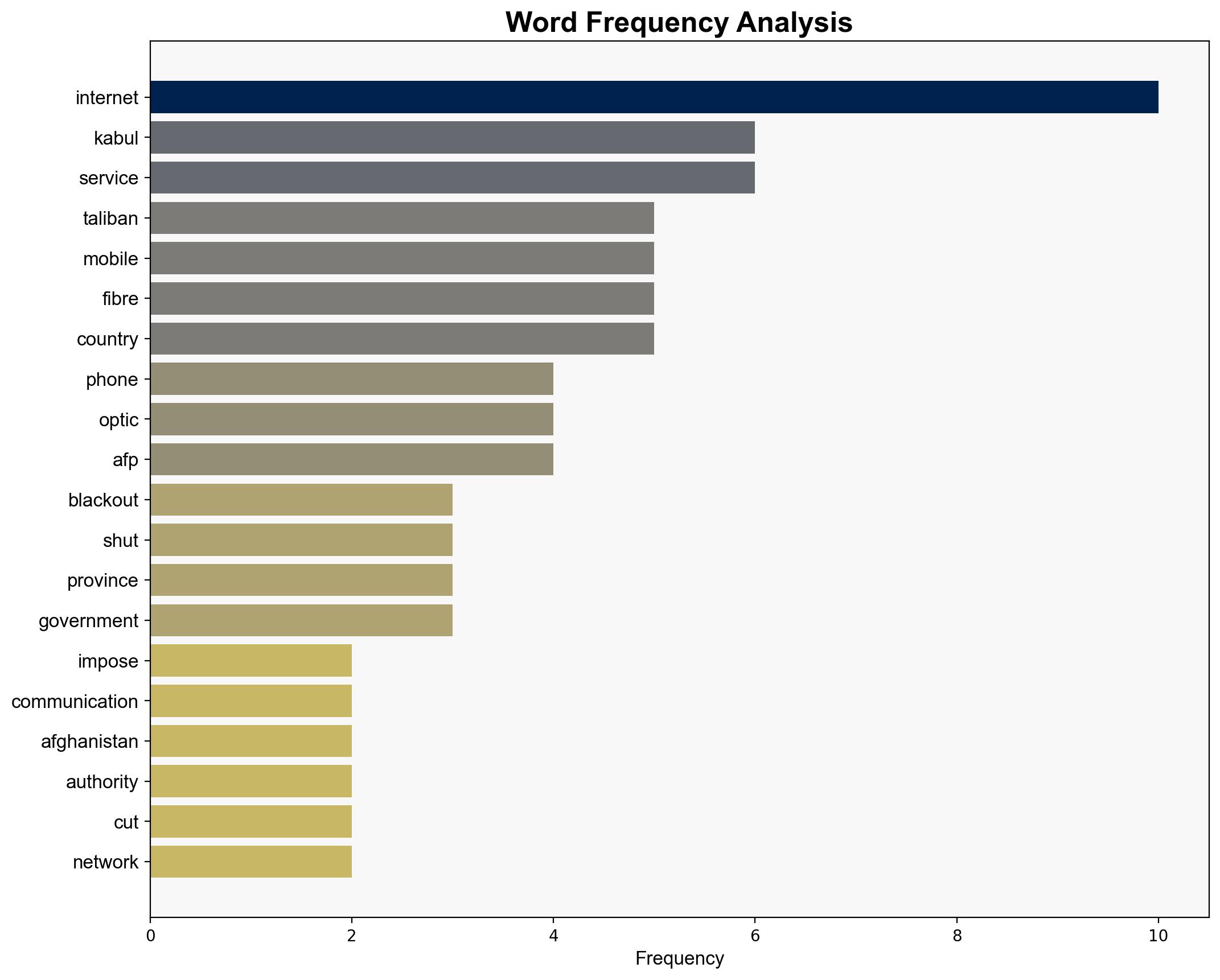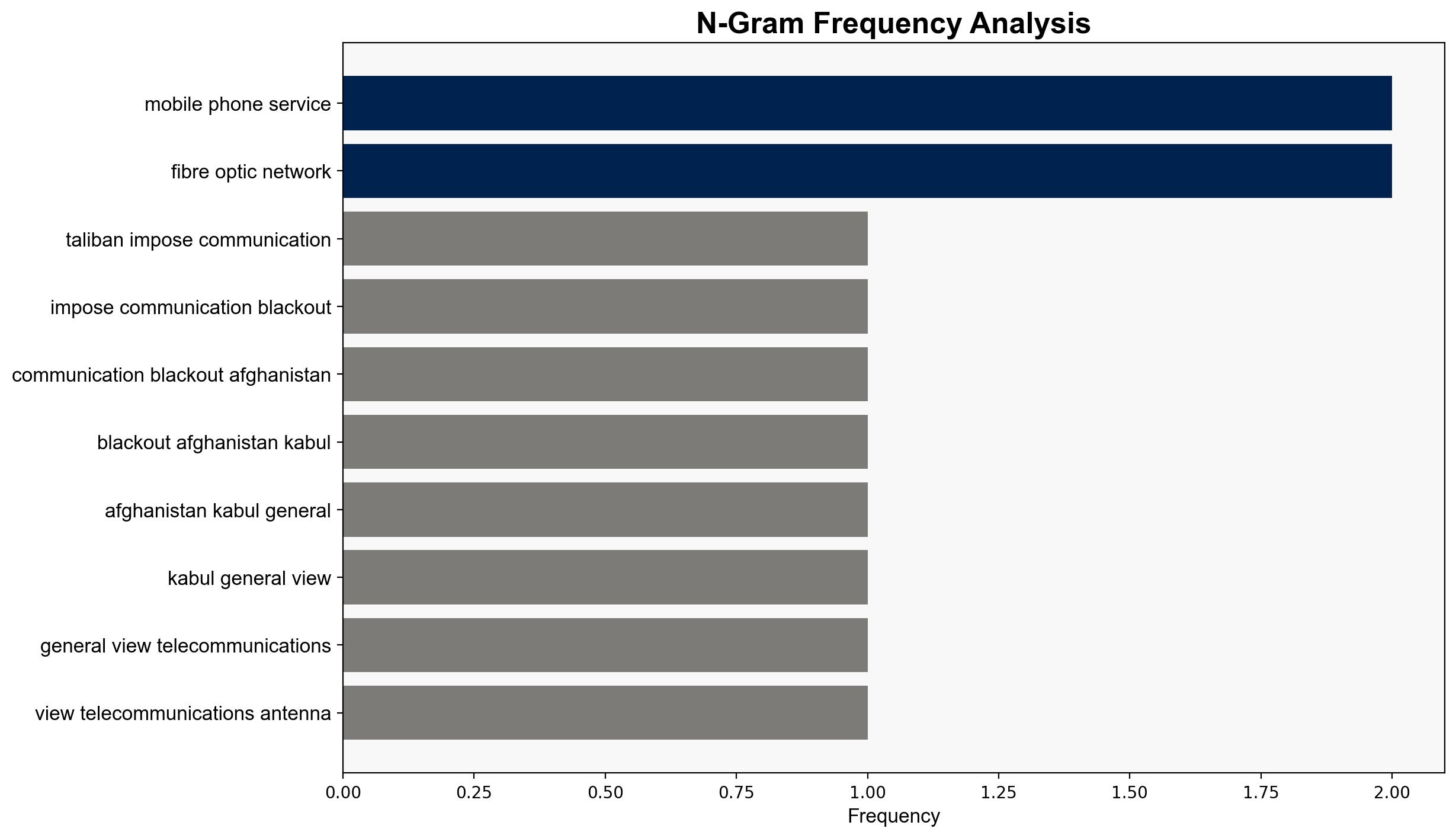Taliban Impose Communications Blackout Across Afghanistan – International Business Times
Published on: 2025-09-30
Intelligence Report: Taliban Impose Communications Blackout Across Afghanistan – International Business Times
1. BLUF (Bottom Line Up Front)
The Taliban’s imposition of a communications blackout across Afghanistan is likely a strategic move to consolidate control and suppress dissent. The most supported hypothesis is that this action is intended to prevent organized resistance and control information flow. Confidence in this assessment is moderate due to limited corroborative data. Recommended action includes enhancing international monitoring and exploring diplomatic channels to pressure for restored communications.
2. Competing Hypotheses
1. **Hypothesis A**: The Taliban are imposing a communications blackout primarily to prevent organized resistance and control the narrative within Afghanistan.
– **Supporting Evidence**: The blackout affects mobile and internet services, which are crucial for coordination and information dissemination. The Taliban have historically used such tactics to suppress opposition.
2. **Hypothesis B**: The blackout is primarily a response to external threats, such as cyber espionage or foreign influence, perceived by the Taliban.
– **Supporting Evidence**: The blackout could be a preemptive measure against external cyber threats or espionage, as suggested by the involvement of internet watchdogs and cybersecurity concerns.
Using ACH 2.0, Hypothesis A is better supported due to the Taliban’s historical use of communication restrictions to maintain control and the lack of specific evidence pointing to external cyber threats as the primary cause.
3. Key Assumptions and Red Flags
– **Assumptions**: It is assumed that the Taliban have the technical capability to selectively impose communication blackouts. Another assumption is that the Taliban’s primary concern is internal control rather than external threats.
– **Red Flags**: The lack of detailed information on the Taliban’s technical capabilities and the absence of explicit statements from the Taliban regarding the reasons for the blackout.
– **Blind Spots**: Potential underestimation of external cyber threats or espionage activities that might have prompted the blackout.
4. Implications and Strategic Risks
The communications blackout could lead to increased economic instability, as businesses reliant on digital communications are disrupted. There is a risk of escalating tensions both internally, as dissent is suppressed, and externally, as international actors may respond to perceived human rights violations. The blackout may also hinder humanitarian efforts and exacerbate the isolation of Afghanistan from the global community.
5. Recommendations and Outlook
- Enhance international monitoring of the situation to gather more intelligence on the Taliban’s motives and capabilities.
- Engage in diplomatic efforts to pressure the Taliban to restore communications, emphasizing the humanitarian impact.
- Scenario Projections:
- **Best Case**: Communications are restored following international pressure, reducing economic and social disruptions.
- **Worst Case**: Prolonged blackout leads to significant economic decline and increased internal unrest.
- **Most Likely**: Partial restoration of services with continued monitoring and international diplomatic engagement.
6. Key Individuals and Entities
– Najibullah, a shopkeeper in Kabul, represents the civilian impact of the blackout.
– Attaullah Zaid, a provincial spokesman, provides insight into regional implementation of the blackout.
7. Thematic Tags
national security threats, cybersecurity, counter-terrorism, regional focus




